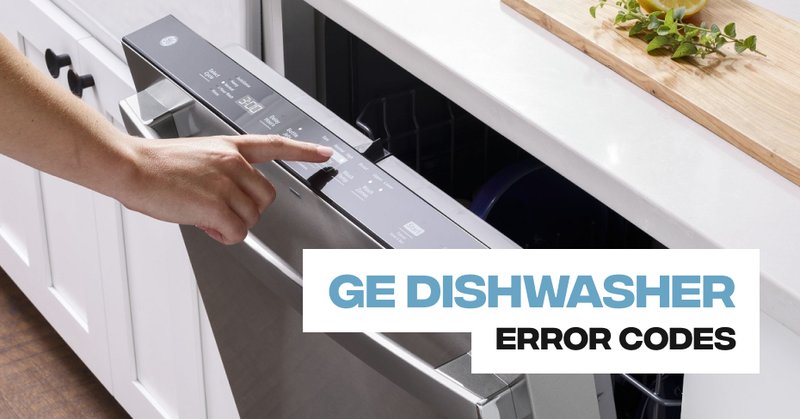
In simple terms, when your dishwasher shows the E3 error code, it’s a sign that something isn’t quite right. Think of it as your dishwasher’s way of raising a red flag. But don’t worry, it’s not all doom and gloom. Just like rebooting your computer can solve many glitches, resetting your dishwasher might just do the trick. However, it’s important to understand what this error code means and why it’s appearing in the first place.
Understanding Error Code E3 on GE Dishwashers
So, what exactly does error code E3 mean? Picture this: your dishwasher is like a small orchestra trying to play a symphony. Each part needs to work in harmony with the others. When error E3 shows up, it’s like a musician playing out of tune. Specifically, error E3 indicates a problem with the dishwasher’s heating system. It might not be heating water properly, making your dishes come out less than sparkling clean.
The heating element in your dishwasher is crucial because it ensures the water is hot enough to clean effectively. If the water isn’t reaching the desired temperature, your dishes might not only be left with food residue but are also not sanitized. This misstep in the process can be due to several underlying issues, such as a faulty heating element, problems with the thermostat, or issues with the control board that you’ll need to explore.
Understanding this code is key before rushing to reset. By knowing what you’re dealing with, you can make sure you’re not just treating the symptoms but addressing the root of the problem. Now, let’s uncover whether resetting your dishwasher can fix this issue.
Can Resetting Your Dishwasher Fix the Error?
The idea of resetting sounds simple, right? It’s like turning things off and on again — a universal go-to for tech issues. But will it work for your dishwasher? Here’s the deal: resetting can sometimes clear temporary glitches. If your dishwasher encountered a hiccup in its electrical systems, a reset might just help it recalibrate and function properly again.
To reset a GE dishwasher, you generally need to press the “Start/Reset” button on the control panel. This is because modern dishwashers are equipped with electronic controls that can occasionally misfire. Give it a few minutes, and then try to start your cycle again.
However, if the error persists even after a reset, it’s a sign that the issue is more entrenched. Just like a quick band-aid fix won’t heal a bigger wound, a reset won’t solve an underlying mechanical or electric issue. So, if after a reset the E3 error still gleams back at you, it’s time to dig a bit deeper into the potential causes.
When Resetting Isn’t Enough: What to Do Next?
So, what are your options if resetting merely gives you temporary relief? It’s like trying to patch up a leaky pipe with tape — sooner or later, you’ll need a more permanent solution. First, let’s consider the heating element. Just like an old toaster that doesn’t heat up properly, if your dishwasher’s heating element is faulty, it won’t generate the heat necessary for effective cleaning.
Inspect the heating element, usually found at the bottom of the dishwasher. Look for visible signs of damage or deterioration. If it seems faulty, replacing the element is often the best course of action.
Additionally, consider the thermostat. This device is like the conductor of the orchestra, controlling the tempo (temperature, in this case). A defective thermostat can throw the entire cleaning process out of sync. It might require testing with a multimeter or considering professional help if it’s not within your DIY comfort zone.
Proactive Measures and Preventative Tips
Now, let’s get proactive! Regular maintenance can be your best defense against error codes. Just like you wouldn’t wait years to change the oil in your car, taking small steps can prevent bigger problems. Regularly clean your dishwasher’s filters and spray arms to ensure everything runs smoothly.
Check seals and gaskets, as they can wear out over time, and keep an ear out for unusual noises that might signal something more serious. When loading your dishwasher, avoid overcrowding. Think of it as ensuring each dish has enough space to get a proper hug from the hot water and detergent.
Lastly, consider running a maintenance cycle every month using a dishwasher cleaner. This can help remove limescale and other buildups, ensuring your dishwasher remains in tip-top shape.
Understanding your appliance and its quirks can save you from future headaches. And remember, when in doubt, consulting with a professional can be the best step to ensure your dishwasher is running efficiently and effectively.